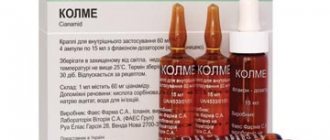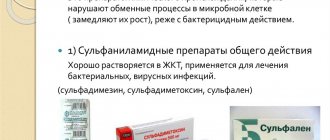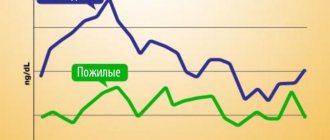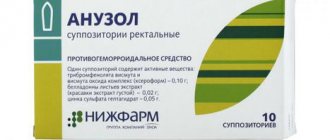Pharmacodynamics and pharmacokinetics
According to Wikipedia, nandrolone is an anabolic steroid with a prolonged action. The androgenic effect of the substance is weakly expressed. Nandrolone is a derivative of testosterone , the anabolic effect of which is more pronounced.
The drug stimulates erythropoiesis , the number of red blood cells in the body increases, the level of hemoglobin and hematocrit , and the rate and intensity of protein synthesis increases. It is noteworthy that the product does not contain a C17-alpha-alkyl group, which can cause disturbances in the liver and affect the development of cholestasis .
The anabolic and androgenic indices in the product are successfully combined, so the drug is often used in bodybuilding to gain muscle mass. It does not cause problems with spermatogenesis and skin rashes, and has low toxicity to the liver.
Retabolil is smoothly released from the injection site and enters the bloodstream. The half-life from the body is 6 days. metabolism in the liver. The main metabolites - 19-norandrosterone , 19-norepiandrosterone and 19-noretiocholonolone are excreted in the urine. The therapeutic effect occurs on the 3rd day after taking the first dose.
Notes
- Metabolism. 1990 Nov;39(11):1167-9
- Effects of nandrolone decanoate on bone mineral content R, Righi GA, Turchetti V, Vattimo A.).
- Cancer Res 1978 Nov;38(11 Pt 2):4186-98
- (Charts) from Minto et al
- AIDS. 1996 Jun;10(7):745-52
- Sattler et al. Am J Physiol Endocrinol Metab 283:e1214-22
- J Acquir Immune Defic Syndrome Hum Retrovirol. 1999 Feb 1;20(2):137-46.
- Wilma M. Bagchus, Jean M. W. Smeets. Pharmacokinetic Evaluation of Three Different Intramuscular Doses of Nandrolone Decanoate: Analysis of Serum and Urine Samples in Healthy Men. The Journal of Clinical Endocrinology & Metabolism May 1, 2005 vol. 90 no. 5 2624-2630
- Miller WR, Anderson TJ, White S, Larionov A, Murray J, Evans D, Krause A, Dixon JM. Aromatase inhibitors: cellular and molecular effects. J Steroid Biochem Mol Biol. 2005 May;95(1-5):83-9.
Indications for use
The drug is prescribed:
- with progressive muscular dystrophy ;
- for osteoporosis of various origins;
- to restore normal protein metabolism after burns , injuries , radiation therapy , severe infections and operations;
- with cachexia ;
- for the treatment of disseminated breast cancer in women;
- for spinal amyotrophy of Werdnig-Hoffmann ;
- with glomerulonephritis ;
- for gaining muscle mass (in bodybuilding);
- for diabetic retinopathy .
The medicine can be combined with cytostatics , glucocorticosteroids , tuberculostatics .
Instructions:
Clinical and pharmacological group
16.038 (Anabolic steroid for systemic use - depot form)
Release form, composition and packaging
The solution for intramuscular administration is oily, greenish-yellow in color, transparent, with a characteristic odor, without foreign visible mechanical inclusions.
| 1 ml | |
| nandrolone decanoate | 50 mg |
Excipients: benzyl alcohol, isopropyl alcohol, sunflower oil.
1 ml - ampoules (1) - cardboard packs.
pharmachologic effect
Retabolil is a synthetic testosterone derivative, a long-acting anabolic drug (depot drug). Stimulates protein synthesis in the body, causes retention of nitrogen, calcium, sodium, potassium, chlorides and phosphorus, which leads to an increase in muscle mass and accelerated bone growth, water retention in the body. Has low androgenic activity.
Pharmacokinetics
Nandrolone decanoate is slowly released from the injection site into the bloodstream with a T1/2 of 6 days. In the blood, the ester is quickly hydrolyzed into nandrolone with a T1/2 of less than 1 hour. In general, T1/2 for the combined process of hydrolysis, distribution and removal of nandrolone from plasma is 4.3 hours. Nandrolone is metabolized in the liver. Metabolites excreted by the kidneys are 19-norandosterone, 19-noretiocholanone and 19-norepantrosterone. Data on the pharmacological activity of these metabolites are not known.
Dosage
Retabolil can be prescribed to both inpatient and outpatient patients. The drug is administered deep intramuscularly. The dose of the drug is determined individually. The average single dose for adults is 25-50 mg every 3-4 weeks. For myopathies, individual doses can be established. For severe renal failure, the dose is 50 mg weekly. Cancer patients can be prescribed a dose of 50 mg every 5 days.
For children, Retabolil is prescribed at a dose of 400 mcg/kg body weight every 3-4 weeks.
Overdose
Symptoms: increased described side effects.
Symptomatic therapy is carried out. There is no specific antidote. If signs of virilization appear, discontinuation of the drug is indicated.
Drug interactions
Retabolil should be prescribed with caution when using indirect anticoagulants (their effect may be enhanced), hypoglycemic drugs (their hypoglycemic effect may be enhanced).
Use during pregnancy and lactation
The drug is contraindicated for use during pregnancy and breastfeeding.
Side effects
In patients of both sexes: nausea, loss of appetite, vomiting, burning sensation in the tongue, increased or decreased libido, acne (especially in women and puberty boys). There may be retention of nitrogen, sodium and water in the body, edema, cholestasis, jaundice, increased vascularization of the skin, hypercalcemia (especially in immobile patients and in women with metastases of breast cancer).
Suppression of gonadotropin secretion.
In women: symptoms of virilization (hirsutism, baldness, irreversible decrease in voice tone, menstrual irregularities, suppression of ovarian function, enlarged clitoris).
In men: suppression of testicular function, oligospermia, gynecomastia, penile enlargement, frequent erections during puberty.
Storage conditions and periods
Storage conditions:
Store at a temperature of 15-30°C, out of the reach of children.
Retabolil solution may become cloudy under the influence of cold. In this case, before use, the ampoule with the drug must be heated until the crystals dissolve.
Best before date:
5 years.
Do not use the drug after the expiration date indicated on the package.
Indications
Use strictly as prescribed by your doctor to avoid complications.
Diseases that require long-term use of anabolic drugs:
— osteoporosis of various origins;
— cachexia of various etiologies;
— disturbance of protein metabolism after serious burns, injuries, surgeries, radiation therapy, and severe infectious diseases;
- progressive muscular dystrophy;
— spinal amyotrophy of Werdnig-Hoffmann;
- diabetic retinopathy;
— disseminated breast cancer in women (as a palliative treatment);
- glomerulonephritis, program hemodialysis in patients with chronic renal failure.
Retabolil can be used in combination therapy with glucocorticoids, tuberculostatic and cytostatic drugs.
Contraindications
- nephrotic syndrome;
- prostate cancer;
— acute or chronic prostatitis;
- breast cancer in men;
- severe liver damage, liver failure in cancer patients or liver metastases;
- pregnancy and breastfeeding;
- hypersensitivity to any of the components of the drug.
special instructions
To achieve an optimal therapeutic effect during therapy with Retabolil, the patient must receive an adequate amount of proteins, fats, carbohydrates, vitamins, and minerals from food.
Due to androgenic activity, the drug is prescribed to women and children if the expected benefit outweighs the potential risk.
When Retabolil is used in high doses during puberty, premature closure of growth plates and growth arrest are possible.
The drug should be used with caution in case of heart failure, renal failure, arterial hypertension, migraine, epilepsy, glaucoma (or if there is a history of them), since anabolic steroids cause sodium and fluid retention in the body. During treatment with Retabolil, intraocular pressure should be carefully monitored.
Before starting and during treatment with the drug, it is necessary to perform rectal monitoring of the size of the prostate gland.
In some cases, during the use of the drug, disturbances in the performance of some functional liver tests are observed. Therefore, liver function should be monitored every 4 weeks.
In patients with diabetes, Retabolil may cause an increase in glucose tolerance, thereby reducing the need for insulin or oral hypoglycemic agents.
Patients with breast cancer metastases to bone may develop hypercalcemia. In this case, anabolic steroid therapy can be prescribed only after normalization of calcium levels in the blood.
The use of anabolic steroids for the purpose of stimulating athletic performance can cause serious harm to health and is unacceptable!
Use for renal impairment
The drug is prescribed with caution to patients with renal failure.
Use for liver dysfunction
The drug is contraindicated for use in severe liver damage, liver failure in cancer patients or in patients with liver metastases.
In some cases, during the use of the drug, disturbances in the performance of some functional liver tests are observed. Therefore, liver function should be monitored every 4 weeks.
Conditions for dispensing from pharmacies
The drug is available with a prescription.
Contraindications
Retabolil is contraindicated:
- during pregnancy and during breastfeeding ;
- children under 18 years of age;
- for carcinoma of the prostate and mammary glands in men;
- after the occurrence of nephrotic syndrome after prolonged therapy with anabolic steroids ;
- for metastases in cancer patients ;
- if the patient is allergic to the components of the product;
- with porphyria ;
- for severe liver diseases.
The medicine is prescribed with caution for cardiac disorders, epilepsy , liver and kidney diseases, diabetes mellitus , high blood pressure , migraine and glaucoma .
Packaging violation
The new order of the Ministry of Health No. 403 n allows for violation of the secondary (consumer) packaging of the drug if the quantity of the drug indicated in the prescription or required by the person purchasing it (over-the-counter) is less than the amount of the drug contained in the secondary (consumer) packaging. In other words, if necessary.
In this case, the drug is dispensed in the primary packaging; instructions (a copy of the instructions) for the use of the dispensed drug are provided.
The new order abolished the keeping of a laboratory packaging register in case of violation of secondary packaging. In addition, there is no need to provide pharmacy packaging indicating the name, factory series, and so on.
It is worth remembering that tampering with the original packaging is not permitted in any way.
Side effects
If the drug is taken as recommended in recommended therapeutic doses, adverse reactions are rare.
With long-term use, the following may occur:
- hypersensitivity reactions ;
- nausea, burning sensation on the tongue, vomiting;
- disturbances in the functioning of the ovaries (hypo- or hyperfunction);
- acne , skin rashes ;
- jaundice , liver disease;
- water, sodium, nitrogen retention and edema ;
- decreased level of gonadotropin .
With insufficient physical activity and in women with breast cancer, hypercalcemia .
Also, in women, the timbre of the voice may decrease, the menstrual cycle , the clitoris will become enlarged, hirsutism , and hair will begin to fall out.
Men sometimes develop oligospermia , the penis and frequency of erections , and the mammary glands become inflamed.
Norms for prescribing and dispensing PKU and NS, PV, as well as ILP
Let us remind you that drugs are dispensed in the quantity specified in the prescription, except in cases where the maximum permissible or recommended quantity for prescribing per prescription has been established for drugs (Appendices No. 1 and No. 2 to the procedure for prescribing and prescribing medicines, approved by Order No. 1175n) .
If a patient presents a prescription that exceeds the permissible or recommended quantity, the pharmacist must inform the patient that the norm has been exceeded and dispense the drug only within the prescribed quantities. And also inform the head of the medical organization about a violation of the prescription.
Let us repeat that, according to the amendments and additions to Order No. 403n, individual entrepreneurs cannot dispense immunobiological drugs. This is a major change from the previous holiday arrangements.
When dispensing an immunobiological medicinal product, the exact time (in hours and minutes) of dispensing the medicinal product is indicated on the prescription or prescription counterfoil, which remains with the person purchasing (receiving) the drug.
The release of an immunobiological medicinal product is carried out in the presence of a special thermal container in which the medicinal product is placed, with an explanation of the need to deliver this medicinal product to a medical organization, subject to storage in a special thermal container for a period not exceeding 48 hours.
The release of ILP for retail sale can be carried out subject to delivery to the place of their use in a thermal container, thermos and other devices in compliance with the “cold chain” requirements.
The pharmacist who carries out the retail sale of IMPs instructs the buyer on the need to comply with the “cold chain” when transporting IMPs (no more than 48 hours), which is noted after its purchase. The date and time of dispensing of the drug are also indicated in the same mark, as well as the buyer’s signature.
Instructions for use of Retabolil (Method and dosage)
The drug is prescribed to both inpatient and outpatient patients.
The medicine is administered intramuscularly, deeply.
The dosage is determined by the attending physician, depending on the disease. As a rule, adults are prescribed 25 to 50 mg of the drug once a month. The dosage for children (in case of urgent need, if the drug was prescribed by a doctor) is calculated at 400 mcg per kg of the child’s weight, the frequency of administration is the same as for adults.
Instructions for Retabolil for anemia
Men are prescribed 200 mg once a week, women – 100 mg once every 7 days. If six months have passed since the start of treatment with the drug, and there has been no improvement, the drug should be discontinued.
For severe renal failure , take 50 mg every week.
Patients with oncology are prescribed 50 mg, once every 5 days.
Steroid profile
- Anabolic activity - 150% of testosterone
- Androgenic activity - 30% of testosterone
- Aromatization (conversion to estrogens) - minimal
- Liver toxicity - low
- Method of administration: injections
- Duration of action - 15 days (half-life - 7 days)
- Recommended dose: 50 mg every 5 days (optimal-minimum option)
- Detection time - up to 18 months
- Testosterone suppression - high (due to progestin nature)
special instructions
It is forbidden to exceed the recommended dosage.
If the drug is prescribed to women, then it is necessary to carefully evaluate the balance of benefit and harm from the drug, due to its androgenic effect on the body.
For diabetes mellitus, it is necessary to adjust the dosage of insulin and other medications.
If the patient has a malignant neoplasm , then the dosage of the drug must be adjusted, taking into account the results of renal tests and the patient's condition.
While taking the drug, it is necessary to monitor blood counts and intraocular pressure .
Persons under 18 years of age may develop hypercalcemia and hypercalciuria .
Replacing dosages
In order 403n there are no special differences with order No. 785. If the dosage differs from that specified in the recipe, then:
- if the dosage is less, then dispensing is allowed, we warn the patient about this and recalculate the amount of medication taking into account the course of treatment and make a note about this in the prescription.
- if the dosage is higher, then replacement is made only in agreement with a medical professional. And again, it is necessary to recalculate the amount taking into account the course and make a note in the prescription with the name of the health worker who authorized this. Such approvals can be carried out over the phone.
Retabolil price
The price of Retabolil in pharmacies is about 250 rubles per ampoule.
Where to buy Retabolil in Moscow?
It can sometimes be difficult to purchase a drug in pharmacies, especially if there is no prescription for it. However, the medicine has a sufficient number of synonyms and analogues containing the same active substance. If you couldn’t buy the product without a prescription at the pharmacy, you can purchase it in the online store. Beware of fakes.
- Online pharmacies in KazakhstanKazakhstan
Rules for filling prescriptions for chronic patients
A prescription for a drug for a patient with a chronic disease is returned to hand. In this case, it is necessary to take into account the notes on the previous drug release. If a prescription needs to be stored for 3 months, then we take it only if the drugs were dispensed in the maximum quantity specified in the chronic patient’s prescription, or if its validity period has expired. In any other case, we return it to the patient.
How will it be possible to prove that the drug was dispensed if the entire amount has not been received, and the prescription is from a chronic patient? At the moment, we can only wait for further clarifications from the Ministry of Health.
To be on the safe side, you can take a copy of the chronic patient’s prescription and put a mark on it with the date of dispensation. If a copy cannot be made, then, most likely, it is worth starting a separate journal, which will contain information about the prescription, drug and data of the employee who dispensed the drug.
If the patient does not repurchase the entire amount of the drug within the validity period of the prescription, then in this case it is necessary to proceed by analogy with dispensing a “chronic” prescription. That is, if the drug is not redeemed, then the prescription is returned, and a note is made in it how much of the drug was dispensed. The chronic patient’s prescription itself is taken away after the entire amount of the required drug has been dispensed.
If one prescription contains three drugs, and the patient purchases only one, then in this case a mark is made indicating how much of which drug was dispensed, and then the prescription is returned to the patient.
If a chronic patient’s prescription contains one of the drugs, the prescription for which must be kept in the pharmacy, then the prescription is collected only if all other drugs have already been dispensed. In general, in this matter, of course, explanatory work with doctors will be more helpful; it is necessary to ask them to prescribe such drugs on a separate prescription.
Please note that for chronically ill patients with prescriptions that are valid for 1 year, a one-time dispensing of the entire amount of the drug can only be carried out in agreement with the medical professional who wrote the prescription.
Prescription Service
New order No. 403 n clarifies the terms for servicing prescriptions. They do not change, but now the norm “from the date of application” applies.
It is prohibited to dispense drugs with expired prescriptions, unless the prescription expired while it was under deferred maintenance.
If a prescription has expired while it is on deferred maintenance, the pharmacy must dispense the drug for that prescription without refilling it. But these changes to Order No. 403n do not apply to the list of NS and PI drugs (List II).
If recipes are issued in violation of the established rules, then they are recorded in a journal, which indicates:
- identified violations in the preparation of a prescription;
- Full name of the medical professional who wrote the prescription;
- name of the medical organization;
- Taken measures.
In this case, the recipe is marked with the stamp “Recipe invalid” and returned to the person who provided the recipe. It is necessary to inform the head of the relevant medical organization about facts of violation of the rules for issuing prescriptions.
In other words, everything is the same as it was in order 785. However, there is currently no approved journal form. You can develop and approve your own, but you can also just use the old form.
Responsibility
And in conclusion about the changes and additions to Order No. 403 n, it is once again worth noting that violation of the vacation rules is a gross violation of licensing requirements. And responsibility for this is provided for in the Code of Administrative Offences:
Article 14.1 of the Code of Administrative Offences.
Part 3. Carrying out business activities in violation of the requirements and conditions provided for by a special permit (license) entails a warning or the imposition of an administrative fine: for officials - from 3 thousand to 4 thousand rubles; for legal entities - from 30 thousand to 40 thousand rubles.
Part 4. Carrying out business activities in gross violation of the requirements and conditions provided for by a special permit (license) entails the imposition of an administrative fine: for officials - from 5 thousand to 10 thousand rubles; for legal entities - from 100 thousand to 200 thousand rubles or administrative suspension of activities for up to 90 days.








